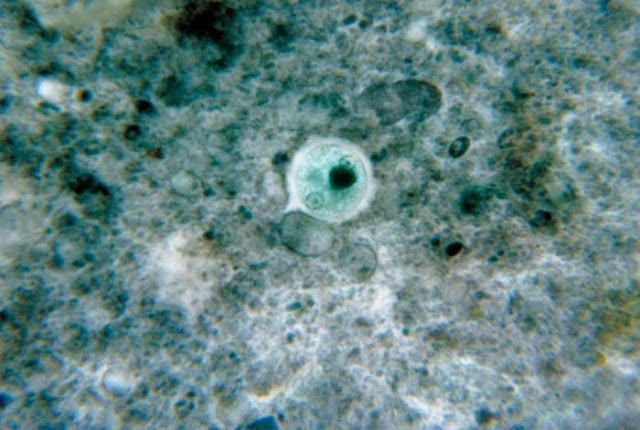There is a disease that you probably haven’t heard of, which infects 35-50 million people every year - mainly in areas of developing countries where wastewater isn’t kept separate from drinking water. It causes symptoms ranging from stomach cramps to life-threatening dysentery (bloody diarrhoea) and, in extreme cases, fatal liver abscesses. This disease, called Amoebiasis, kills up to 100,000 people annually, and is caused by the parasitic microbe
Entamoeba histolytica.
When accidentally ingested by a human, the parasites stay as ‘armoured’ dormant cells called cysts, until they pass through the highly acidic stomach. Upon entering the large intestine, the environment becomes more hospitable for them and allows them to transform into their active form.
 |
| It was once thought that E. Histolytica infected 10% of the world's population - but although that figure has been reduced to just 1%, that's still a lot of people. Image credit: CDC / Dr. George Healy (1964) |
Many of them will stay in the intestines but some pass out of the host in faeces, and transform into cysts again in order to survive in the more varied temperature and acidity levels they must endure before finding another host. But it is those that remain which (might) cause a problem. This is the main mystery of
E. histolytica - not everybody infected will experience the same symptoms, if any. So what triggers the different levels of infection?


